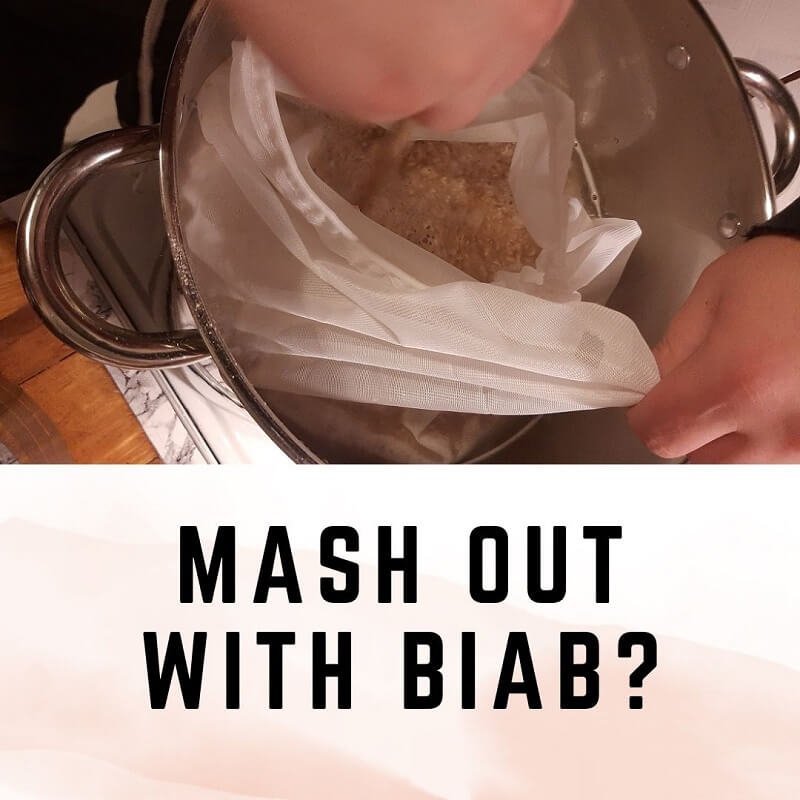
BIAB is the favorite homebrewing method of many and its simplicity and outstanding efficiency are what make it so popular.
Mash-out is a standard process in most brewing methods and it can hardly be skipped in commercial and traditional breweries of today and the past. The question then stands, what’s the purpose of mashing out when doing BIAB (brewing in a bag)?
Mash out isn’t a typical part of the BIAB process and it’s completely unnecessary, but you should mash out when delaying brewing for later to lock the wort by stopping enzymatic activity after the mashing step.
As you can see, BIAB allows you to skip most traditional steps and save you time, and energy and make less room for errors. Moreover, you can find a similar answer for sparging when BIAB, however, it’s good to know how to extract most sugars out of the bag with a BIAB version of sparging I explained in the mentioned article.
What’s the purpose of mash-out?
Mash out is an essential brewing step in which the temperature of the wort is increased from the mash temperature of 145-155°F (63-68°C) to 170°F (75°C) in order to stop the enzymatic activity and make the wort less viscous.
At mash-out temperature, the enzymatic activity stops, so the fermentable sugars you got from the starch are now final and the profile is locked. This is important for the desired efficiency, and you want to control the process you are doing, so nothing can randomly change without your knowledge.
The fact that mash out also makes wort less viscous is important for recirculation and sparging steps that follow traditional brewing methods.
Too viscous wort can get stuck, so it’s essential to heat it up. Just think of honey, it’s highly viscous at room temperature, but when you warm the honey it becomes less viscous and it’s easier to manipulate.
Why mash out isn’t necessary for BIAB?
Mash out is an excellent method that helps you control the ending of the mashing process, so you get desired fermentable sugars from the starch and then put a final say onto it and make the wort less viscous which is important for the next steps.
However, when we BIAB there’s no need to make the wort less viscous as the grains never leave the bag, and we will stop the enzymatic activity by bringing the wort to the boiling point which is our last step in brewing in a bag.
When we finalize mashing after 60 minutes, squeeze and wash the grains in the bag and top up the water in the kettle, the temperature will pass through the traditional mash-out temperature of 170°F (75°C) and go all up to 100°C after which we will add hops and finalize the brew.
Mash out if you plan to delay brewing
There’s one occasion when you should mash out even when brewing in a bag. If you plan to delay the brewing after mashing, it’s important to mash out after squeezing the bag so you lock the profile and hopefully also destroy some possible contaminants if they somehow managed to get in the kettle and survive.
After this, you can put the wort in the fridge with a lid and continue brewing the other day or so.
Bear in mind, that the longer you delay the mash out, the higher the odds that the quality will drop because the wort won’t be as fresh after 7 days in the fridge.
Therefore, I would never delay for more than 24-48 hours.
Final take on
There you go, mash out has its perks, and for a reason, it’s an important step in traditional brewing methods, but we who BIAB are lucky to use the least number of steps to brew an excellent beer.
It’s always useful to be aware of what’s the purpose of brewing methods because when you decide to experiment and perhaps build a brewing rig to brew more than 5 gallons or experiment with recipes you are aware of what’s going on and what you can use to solve a problem.
Just as you can completely rely on a bag, it’s possible to combine brewing methods and knowledge and perhaps come up with a new way to brew because as long as it works and produces great booze, it’s a way to go!
